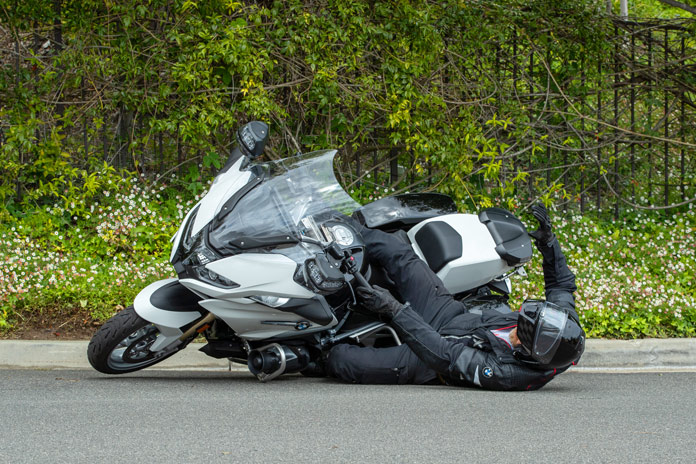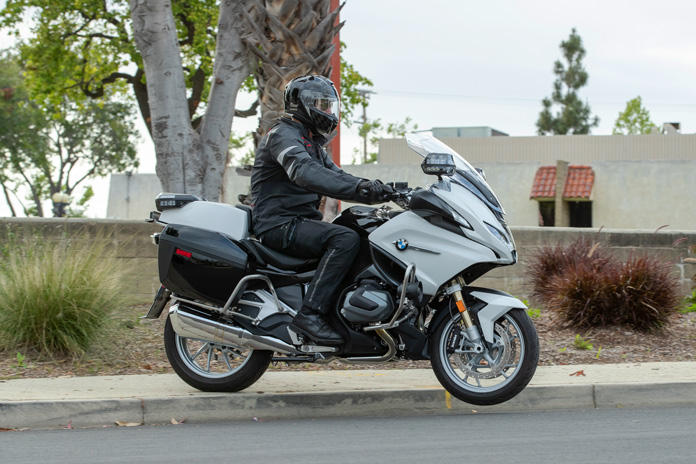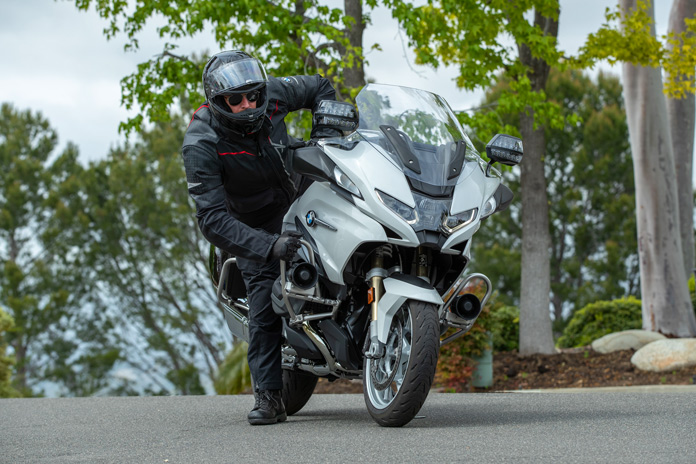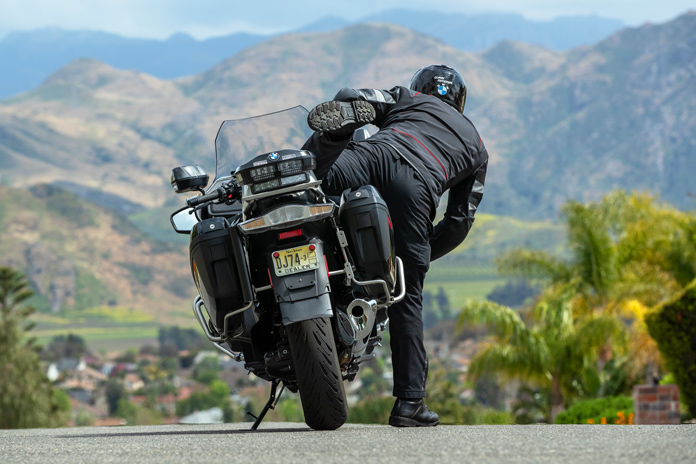
In my career, my police motor slammed the pavement exactly five times when deploying the kickstand and dismounting the bike. And yes, it was on par with that dream we’ve all had where you show up at school with no pants and all the kids laugh at you. Exceedingly embarrassing for sure, but thankfully I’m still alive and riding because every single time I dropped my bike, I was following the Golden Rule: “Always and forever mount and dismount your motor from the high side.”
That’s right, folks. It turns out there’s a correct side of the motorcycle to get on and off from, and it isn’t the side most of you use. Sounds ridiculous, right?
Now, I know you’ve successfully accomplished the task of resting your motorcycle on its kickstand thousands of times. Heck, you’re almost psychic when it comes to surface appraisal and road camber when you boot that stand out. In fact, you’re probably cursing me in your head, arguing that which side you mount or dismount from ultimately depends on where you park your bike or which hand is holding your Milk Duds. But in motor school, I learned the best way to get on and off a motorcycle: from the “high side.”
Perhaps it’s obvious, but in case I lost you, allow me to explain. For the most part, kickstands are deployed from the left side of the motorcycle. If you put your motorcycle on its kickstand, the bike will settle, or lean, to the left. Therefore, if you were to stand directly behind the bike, the “high” side is the right side of the bike, or the side where your throttle and front brake lever are located. Since the bike is leaned over on the stand, the seat is higher on the right side. Make sense?
Keep in mind that all vehicles in the United States travel on the right side of the road, with opposing traffic on the left. Now, let’s imagine you are riding along and need to get that super tight blue sweatshirt that you love to show off out of your saddlebag. You pull to the side of the road, kick your stand down, and start getting off the bike. But on this particularly cruel day, your bike begins to roll off its kickstand, resulting in the bike falling to the left – or “low” side – and toward traffic.
Adding chaos to the scenario, it turns out your right leg is the one with a wonky ACL and two meniscus surgeries, so you decided to plant your left foot on the ground and started your dismount on the left (low) side of your bike as it began to fall. Regrettably, your bike starts falling directly onto your one good leg, potentially knocking you into oncoming traffic as it wraps you up and takes you down with it. Not great.
Now let’s put on our mirrored rainbow glasses and imagine you dismounted from the “high” side as your motorcycle started to fall off the kickstand. Not only will you look fabulous, but your right leg will remain planted so your left leg can gracefully swing over the seat like a gazelle’s, safely clearing you from the bike as it ponders what parts and pieces to destroy as it slams to the pavement. Embarrassing and costly? Absolutely, but pretty low risk to you physically.
The good news is this technique pays dividends not just when parked on the road but also in parking lots, your driveway, or anywhere else you throw that kickstand down. I can’t promise that your buddies won’t find some other reason to make fun of you, but like I’ve said a thousand times, you bring that crap on yourself.
So, from now on, follow my little parking ritual: Shut off the bike, put it in 1st gear, deploy the kickstand, turn the handlebar full‑lock left, gently ease the bike over onto the kickstand, and step off the high side of the bike. If you need a little assistance with your dismount, grab the front brake and use the handlebar for leverage. And while the process is simple enough, give it a few dry runs in the garage first. Practice makes perfect, though I can’t promise you won’t get weird looks from your friends.
Bonus Motor School Tips
As the late, great Billy Mays used to say, “But wait, there’s more!” Here are a couple more tips to help you out there on the street.
Curb appeal: If you find yourself in a situation where you need to ride your big heavy bike off a curb, accelerate off rather than tiptoe and duck walk the front wheel off the drop where the lower fairing, oil pan, or pipes could get smashed. I’m not suggesting you channel your inner Daniel J. Canary, the man who invented the wheelie, but ride off like you would accelerate from a typical stop: in a straight line with smooth, assertive throttle (as shown in the photo below).
And yes, I know firsthand what a great tip this is because I once watched a fellow motor officer gingerly roll his new BMW R 1250 RT‑P off a tall curb at a DUI checkpoint. After hearing a gut‑wrenching pile‑driver concussion, I watched as hot oil spewed out onto the pavement. Oof.

Brake time: If your bike has been sitting unridden for a while, be sure to work your brake levers and pump up the calipers before you take off. When I first heard this suggestion from an old motor cop, I laughed out loud. But then he walked me over to my bike, gently pushed on my front brake calipers with his boot, and asked me to grab the front brake lever. With a cocky gleam in my eye, I pulled the lever, only to have it bottom out at the throttle grip – the brakes didn’t work at all. Turns out the fluid in your brake calipers can be forced back into the master cylinder if bumped or pushed hard enough, causing the brakes to need some pumping up before they work again.
Find Quinn at Police Motor Training. Send feedback to [email protected].
See all Motor School with Quinn Redeker articles here.
The post Motor School with Quinn Redeker: How’s Your Dismount? appeared first on Rider Magazine.
Source: RiderMagazine.com


